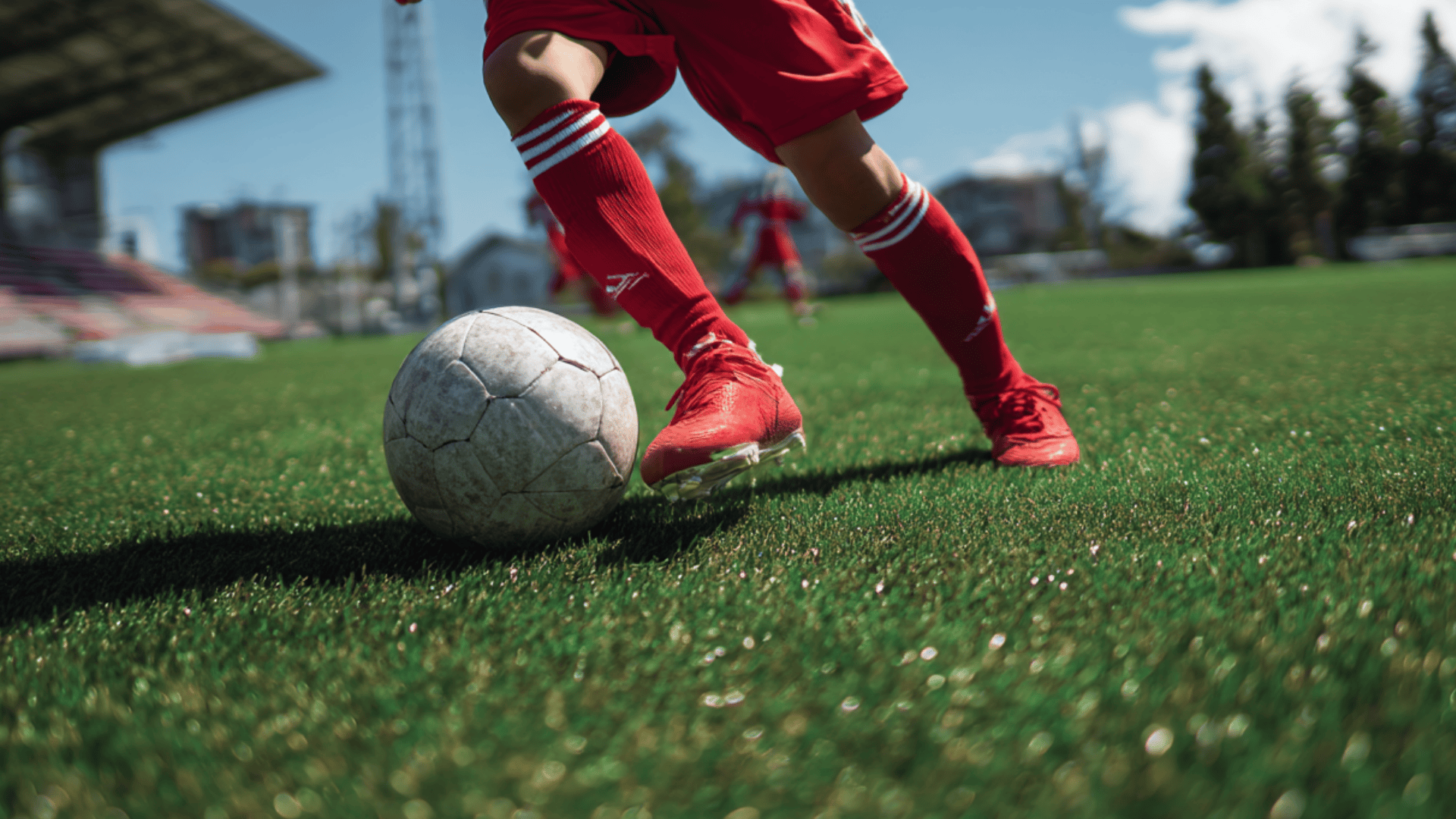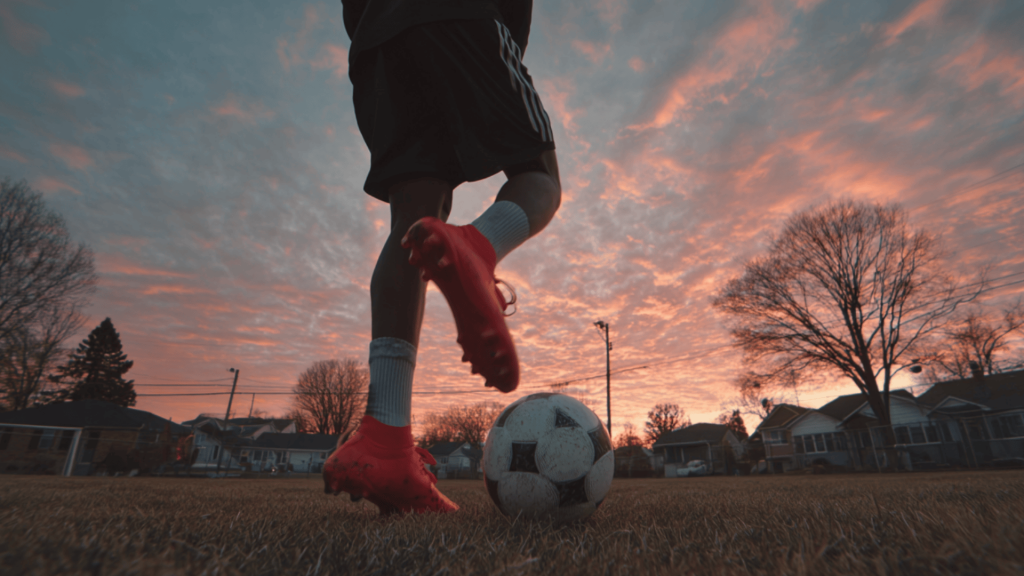Every touch of the ball tells a story – will yours be one of mastery or missed opportunities?
Picture yourself gliding past defenders like they’re standing still, the ball seemingly glued to your feet as you weave through traffic with effortless grace.
This isn’t just a dream reserved for professional players; it’s a skill that can be developed with the right approach and dedicated practice.
Dribbling changes ordinary players into game-changers. It’s the difference between being predictable and becoming unstoppable, between losing possession under pressure and creating magic moments that win matches.
If you’re just starting your soccer journey or looking to improve your existing skills, mastering the art of ball control opens doors to unlimited possibilities on the field.
Why Dribbling Is the Heart of Soccer
Dribbling is one of the most exciting parts of soccer.
It helps you keep the ball away from other players and move it where you want it to go.
When you dribble well, you can break through tough defenses and create scoring chances. Good dribbling makes you feel more confident on the field.
It also makes you harder to predict, which confuses defenders. The importance of soccer dribbling shows in every great player’s game. Dribbling gives you control and helps your team win games.
Building Strong Fundamentals

Strong basics are the foundation of great dribbling. Without good fundamentals, fancy moves won’t work when you need them most.
1. Close Ball Control
Keep the ball close to your feet at all times. This makes it harder for defenders to steal. Practice touching the ball with small, quick taps.
Your feet should almost hug the ball as you move. Close control gives you more options when defenders come near.
2. Both Feet Training
Don’t always use your favorite foot. Practice with your weak foot every day. This makes you twice as dangerous on the field.
Defenders won’t know which way you’ll go. Start slowly with your weaker foot and gradually build up speed over time.
3. Head Up Play
Learn to dribble without always looking down at the ball. This helps you see teammates and defenders around you.
Practice dribbling while looking straight ahead. It may feel unusual at first, but it’s extremely important. Great players always know what’s happening on the field.
Perfecting Your First Touch
Your first touch sets the stage for everything that happens next. A good first touch makes dribbling much easier.
| Control Type | When to Use | How to Do It |
|---|---|---|
| Inside Foot | Close control, tight spaces | Use the inside of your foot to cushion the ball softly |
| Outside Foot | Moving away from pressure | Use the outside edge to push the ball to the side |
| Sole Control | Stopping quickly | Use the bottom of your foot to trap the ball completely |
Practice these first-touch soccer techniques every day. Start with slow passes and work up to faster ones.
Note: The key is to make your first touch move the ball where you want to go next, not just stop it.
Mastering Change of Direction
Quick direction changes create space and confuse defenders. These moves are your secret weapons on the field.
- Cruyff Turn: Plant your foot next to the ball, then cut it back behind your standing leg
- Step-over: Step over the ball with one foot, then push it away with the other foot
- Drag-back: Use your sole to pull the ball back, then push it in a new direction
- Body feint: Lean one way to fake the defender, then quickly go the other way
- Stop and go: Slow down suddenly, then burst forward when the defender relaxes
Practice these best soccer dribbling moves until they feel natural. Remember, timing matters more than looking fancy.
Combining Speed with Control
The best dribblers can go fast without losing the ball. This skill separates good players from great ones.
Start by dribbling slowly with perfect control. Then gradually increase your speed while keeping the ball close to you.
Practice sprinting with the ball, then stopping instantly and repeating. Work on your balance because fast dribbling requires strong core muscles.
Soccer agility drills help you change speeds quickly and efficiently.
Train your legs to be quick but also gentle with the ball. Dribbling with speed comes from lots of practice, not just running fast.
Using Your Body to Shield the Ball
Your body is your best tool for protecting the ball from defenders. Learn these key techniques to keep possession.
| Technique | Description | Key Points |
|---|---|---|
| Body Position | Keep your body between the defender and the ball | Stay low and balanced |
| Arm Use | Use your arms for balance, not pushing | Keep arms out, but don’t foul |
| Balance | Stay on the balls of your feet | Ready to move in any direction |
| Ball Distance | Keep the ball on the side away from the defender | Use your body as a wall |
Practice dribbling in a circle while a friend applies gentle pressure to your ball. This drill teaches you how to shield the ball in soccer while staying calm.
Practicing with Small-Sided Games
Small games with fewer players help you practice dribbling in real situations. These games put pressure on you just like real matches do.
- 1v1 games: Face one defender and practice your moves in tight spaces
- 2v2 matches: Learn to dribble while teammates help you create space
- 3v3 scrimmages: Practice quick decisions with more players around you
- Limited touches: Use only two or three touches to improve quick thinking
- Small goals: Play on smaller fields to increase dribbling opportunities
These small-sided soccer drills make you a better dribbler because you get lots of touches and face real pressure.
Mental Side of Dribbling
Your mind is just as important as your feet when dribbling. Stay positive when you make mistakes because that’s how you learn.
Watch professional players on TV and see how they move with the ball. Try to copy what they do in your own practice.
Celebrate when you master a new move, no matter how small.
Building confidence in dribbling takes time, so be patient with yourself. The soccer mindset for improvement means never giving up, even when things get hard.
Conclusion
Learning how to improve your soccer dribbling skills takes practice, but it’s totally worth it.
Focus on the basics first: close control, using both feet, and keeping your head up. Master your first touch and practice changing directions quickly.
Combine speed with control, use your body to protect the ball, and play small-sided games for real practice. Don’t forget that your mind matters too – stay positive and keep working hard.
These soccer dribbling tips will help you become the player you want to be. Remember, every great dribbler started exactly where you are now.
What’s the one dribbling move you want to master first? Try it today and see how it feels!





































